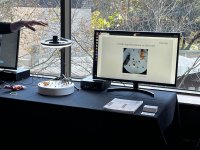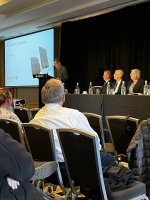D
Deleted member 118
Guest
He must have been jet lagged as there is no other excuse for the poor performanceAgree with all the comments here. I'm willing to consider Sean was unwell, or hungover or something, but he needs to do much better, for the amount of money he makes. Our money. First strike! A second and he'll likely be out of a job. And that won't look good on the resume..
Tony did well, spoke clearly and seems to have his finger on the pulse. Much more aligned with shareholders expectations and knew what our concerns would be. Was empathetic to our plight and didn't act like a child being scorned.
But too many important questions were dodged. The big one being why are they the directors not investing their own money?
The other issue being around share incentives? We're told we can't know the metric on which these people are judged... they say they made it simple. Well, make it simple... share price? Sales? Acquisition of talent? Licences? Those metrics can't be under NDA's....they can surely tell us those. Why would we approve our money to be given to them and expect them to be honest about what the metrics are used?
Now, the way I see it, we have a product or products being developed but as shareholders, no idea who or if anyone is using it. Or will be soon.
If the product is so good, they need to let the product speak for itself and show that to the world. Develop a use case in house, do a study. They have the engineers, the support team. Don't wait for some mercedes or megachips or some other company to do it, and hope they mention us.
Customers and shareholders will flock if we can show how advanced it is. I'm not asking to say how it works, just that it does. Put some effort into showing that it works in the real world. Not just for us shareholders, but customers.
They seem to think that once someone signs on it will open the flood gates... but it seems most companies that might use us will keep that usage well under wraps. So they need a professional show, a product of their own that shows its advanced capabilities.
I for one will stay holding on, but I'm not happy and haven't been for a while with the lack of information and lack of sales. The obvious question being, does this have any real world applications. I was hoping for some reassurance today, but have been left wanting.
But again, I will hold, because the question being does it work or not, although unanswered for me. I still feel that this is a huge future market and I'm willing to gamble the odds that it does work.
Cheers
Draed...
NFA, DYOR







